#are all the transhumanists excited these days
Explore tagged Tumblr posts
Text
This project is not something a researcher would ever write a grant proposal for. It’s an exploration that threatens to reverse an entrenched idea—that T cells have an intrinsically limited capacity to fight—with no guarantee of success. “It’s almost a historically monumental experiment to do. No one does an experiment that lasts 10 years,” says Wherry. “It’s antithetical to funding mechanisms, and a five-year funding cycle—which really means every three years you have to be doing something new. It’s antithetical to the way we train our students and postdocs who typically are in a lab for four or five years. It’s antithetical to the short attention span of scientists and the scientific environment we live in. So it really says something fundamental about really, really wanting to address a critically important question.”
Indeed, the project remained unfunded for the first eight years, surviving just on lab members’ spare time. But its central question was ambitious: Must immune cells age? In 1961, microbiologist Leonard Hayflick argued that all of our cells (except eggs, sperm, and cancer) could only divide a finite number of times. In the 1980s, researchers advanced the idea that this might play out through the erosion of protective telomeres—a sort of aglet at the end of chromosomes—which shorten when cells divide. After enough divisions, there’s no more telomere left to protect the genes.
This project challenged the Hayflick limit.
9 notes
·
View notes
Text
PF2E Classes and Dating Dynamics
Episode 1: Bard
Bard + Alchemist: Wedded Weirdoes. Sharing a love for the boundaries of the known world, and even moreso pushing past those boundaries into the unknown. Eclectic, odd, and idiosyncratic, but never out of sync with one another. There is at least 1 mutagenic used in the bedroom nightly.
Bard + Barbarian: The Wolf and its Howl. Barbarian feels numb to the world due to their grueling training, and Bard reminds them the beauty of small, gentle things. Who is protecting whom differs depending on which you ask.
Bard + Bard: Songbirds. Cute little love ballads to each other, coming up with the stupidest rhymes with each other's names. Calling each other pet names like "Muse" and "My Sweet Sonata". Nasty freaky sex.
Bard + Cleric: Would you still love me if I were a Bookworm? They meet in a class discussing the Theological importance behind Likha, The Teller. Both are quiet, so as not to gush, until an obscure bit of trivia leaps from their mouths in unison. They spend the night together in the dorms, but they're far too busy talking to sleep. Two lovable gray ace dorks.
Bard + Champion: Hype and Hyper. Champion slays and kicks ass for their god. Bard thinks that's badass, starts playing some sick trumpet. The excitement is electric, and sparks form between them. They have a sex playlist, and Def Lepperd is on it.
Bard + Druid: The Spider and the Fly. No one understands the Druid quite like the Bard. There is a roughness, a viciousness to love that society has shorn off. Filed the points from our fangs to distance ourselves from beasts. The Bard remembers. The Bard can sing the old songs, just like the Druid can. Stare them in the eye, no matter their shape or size, and refuse to blink. Their love is raw gold in the belly of a forgotten cave, and that's just how they like it.
Bard + Fighter: Knight and Squire. Bard has ballads set aside just to tend to Fighter's wounds. Fighter learned to pick up a shield so that no one hurts their Bard. They lift each other up, holding each other to a fierce, almost competitive standard, only because they believe in each other so much.
Bard + Inventor: Experimental. Societal standards are stupid and identity is what they want it to be. Transhumanists who love each other's ability to ebb and flow. Music, fashion, expression, and even bodily configuration change day by day, and yet their hearts never drift apart.
Bard + Kineticist: Hearts Aflame. A Bard in awe of a dangerous powerhouse of fire. A Kineticist baffled by this Bard's insistence on being around despite constantly getting (slightly) incinerated. Their love is sacrifice and compromise, hard earned and Aloe scented.
Bard + Magus: Battle Buddies! Have you ever noticed how combat is like a dance? These two have! Magic, steel, song, dance, blending together in beautiful harmony. It's no wonder they get along so well, they're like puzzle pieces fit tightly together.
Bard + Monk: Order and Entropy. Sometimes, we must shed blood for peace. Sometimes, our silence must speak loudly for us. The Bard's creativity is tempered by the Monk's discipline. The Monk's form is made flowing by the Bard's song. In life and love, all things must be brought into balance.
Bard + Oracle: Strangers Together. An Oracle's burden is a heavy one. Nightmares wrack their restless nights, and alienation riddles their everyday life. If not for the lullabies of the Bard, they wonder how they would sleep at all. They hold hands, staring together at the Enigma, and for a moment, they feel a little less alone in this weird, wild world.
Bard + Psychic: Dark Side of the Heart. Bard will never forget their first meeting. Psychic will never remember it. The power of a Dark Persona is mesmerizing, like looking into the eye of a storm. Bard has tried and failed a hundred times to capture that feeling into a song. Psychic eventually stops apologizing for its existence... and feels a lot less lonely now that they have someone to confide their darkness into.
Bard + Ranger: Folk Heroes! Any talking that is done in this relationship is very one sided. The Bard will tell you all about how their partner slayed the evil giant with one hand tied behind their back, or pole vaulted across the sea with a single bamboo chute, or lifted a whole town out of the way of a volcanic eruption! The Ranger, smiling quietly, will simply add "That's true, mostly."
Bard + Rogue: Starcrossed Sneakthiefs. They meet in jail, both imprisoned under different circumstances. This isn't either of their first jailbreaks, but its their first one together. They turn robbery into romance, and second story work into soulful serenades. The only thing they need is each other... and everyone else's stuff too.
Bard + Sorcerer: Forbidden Feelings. Who else would understand? The way that society treats us different...the way they cast their looks of shame down upon us. We were born this way! We had no choice! If only they knew just how heavy it was... the burden of being...just so horny for dragons.
Bard + Summoner: Pet People. It's not often you find your true soulmate, or a trusty animal companion that'll stay by your side. Even rarer, the Bard finds both in the Summoner. Eidolons, the truest shape of one's soul, have a kind of "people sense" that cannot be overstated. It is no surprise then that the Summoner's face turns bright red when, for the first time ever, their Eidolon bends its head down to allow the Bard to give the goodest boy some pats.
Bard + Swashbuckler: Theater Dropouts. They met in the detention center of their college. One had switched the prop swords with real ones to show their prowess on stage. The other had cast Sleep on the lead to make them miss their entrance. It isn't their fault that the stage isn't big enough for them, someone ought to build a bigger stage! When they look into each other's eyes, minutes before facing their possible expulsion, they realize it doesn't matter. They'll star in this adventure together, two leads unbound by petty things like direction and criticism.
Bard + Thaumaturge: Hobby Hubbies. Bards, like crows, are known for their love of shiny things. Any Thaumaturge worth their weight in salt has a plethora of trinkets, doodads, and gizmos that have been marinating in hundreds of years of esoteric lore. You know what they say, couples that treasure hunt together stay together.
Bard + Witch: Love Through Spite. Listen, patrons suck. They're flighty, they speak in riddles, they have stupid expectations, and half the time they don't even know what they want. The only difference between ours is that yours is the Spirit of Winter and mine owns a villa in Tian Xia. Let's bitch together until the pain stops.
Bard + Wizard: Bitter Rivals. These two are the absolute bane of any unsuspecting lecture goer's existence. It starts off simply, one will answer a question provided by a teacher, or give some small anecdote. Like volatile chemistry, the other will react with something snide. Snideness turns to rudeness. Rudeness turns to vitriol. Vitriol manifests in nasty spells slung across the lecture hall. With all of the fighting they do, it's a wonder (and a nightmare, really) to all their classmates why they always end up in the same classes. The truly keen are left with an even larger mystery: why has the Wizard been repeatedly spotted leaving the Bard's dorm in the wee hours of the morning? The world may never know.
#theoposting#pathfinder2e#ttrpg#pf2e#rpg#dnd#romance#fantasy#dating#shipping dynamics#shitposting#shitposts that I worked way too hard and long on but whatever it's a writing exercise so like it counts as being productive or something
11 notes
·
View notes
Text
Fantasia Announces First Wave of Titles for Its 28th Edition
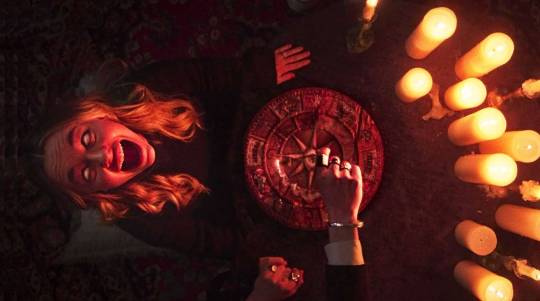
The Fantasia International Film Festival will celebrate its upcoming 28th edition with an electrifying program of screenings, workshops, and launch events running from July 18 through August 4, 2024, returning yet again at the Concordia Hall and J.A. de Sève cinemas, with additional screens and events at Montreal’s Cinémathèque québécoise and Cinéma du Musée.
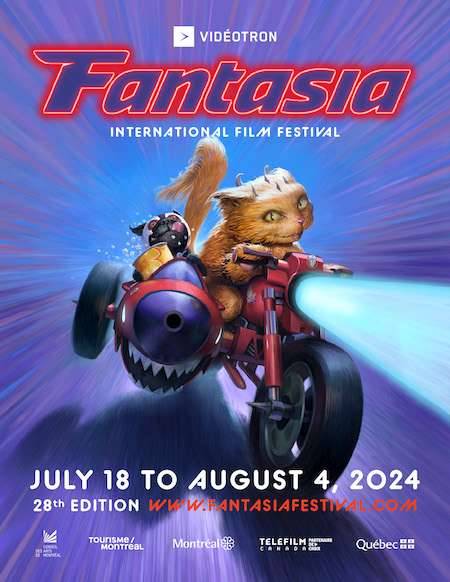
Poster art by Donald Caron The festival’s full lineup will be announced on July 3, but in the meantime, Fantasia has revealed a select first wave of premiere titles, along with a first look at its 2024 poster art. The festival’s 2024 poster art, created by Montreal visual artist Donald Caron, brings back two of the festival’s most beloved characters from earlier editions, returning by popular demand. The cinema-loving cat and pug, barreling into the future on a sidecar motorcycle, embody the excitement, playfulness, and absurdity that Fantasia has championed since its inception in 1996.
28th Fantasia International Film Festival
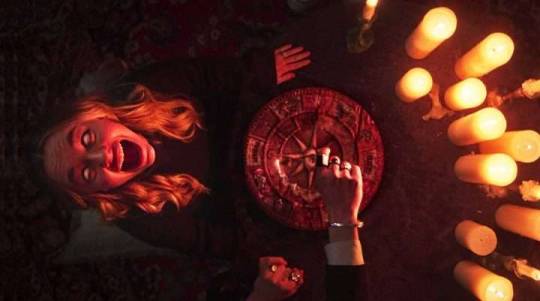
CHUCK RUSSELL RETURNS TO HORROR WITH WITCHBOARD, A WILD RE-IMAGINING OF THE CLASSIC 80'S FRANCHISE! https://www.youtube.com/watch?v=Qr0d00hy1h8 From A NIGHTMARE ON ELM STREET 3: DREAM WARRIORS and the beloved1988 remake of THE BLOB to THE MASK, ERASER, and THE SCORPION KING, director Chuck Russell has no shortage of imaginative fantasy/horror classics under his belt. Now he returns to the genre he’s marked so brilliantly with a radical reinvention of Kevin S. Tenney’s 1986 Canadian cult favorite WITCHBOARD. Emily (Madison Iseman, ANNABELLE COMES HOME) and her fiancé Christian (Aaron Dominguez, Hulu's Only Murderers in the Building) discover an ancient Wiccan artifact, a pendulum board, as they prepare to open a bistro in New Orleans' French Quarter. Emily becomes obsessed with the board's powers, exposing her to the ancient spirit of the Queen of Witches. Desperate to help his fiancé, Christian seeks the advice of occult expert Alexander Babtiste (Jamie Campbell Bower, Netflix's Stranger Things, the TWILIGHT saga), but Babtiste has dark secrets of his own. Shot in Montreal by cinematographer Yaron Levy (UNIVERSAL SOLDIER: DAY OF RECKONING). Also starring David La Haye (TRUE NORTH), Charlie Tahan (Netflix's Ozark), Antonia Desplat (AppleTV+'s Shantaram), and Mel Jarnson (MORTAL KOMBAT).

PRESENTED BY MIKE FLANAGAN, CHRIS STUCKMANN’S SHELBY OAKS IS HERE https://www.youtube.com/watch?v=H4u3Z72KhN8 A woman's desperate search for her long-lost sister, a famous YouTuber who investigated paranormal happenings, falls into obsession upon realizing that the imaginary demon from their childhood may have been real. After a successful Kickstarter campaign that broke records across the platform, the highly anticipated feature debut feature from YouTube creator Chris Stuckmann is finally here and ready to scare the pants off the world. SHELBY OAKS delivers in all departments. Starring Camille Sullivan (HUNTER HUNTER), Brendan Sexton III (DON’T BREATHE 2), Sarah Durn (RENFIELD), Keith David (THE THING, NOPE), and Michael Beach (AQUAMAN). Produced by Aaron B. Koontz, Cameron Burns, and Ashleigh Snead, and Executive Produced by Mike Flanagan and Trevor Macy, among others.
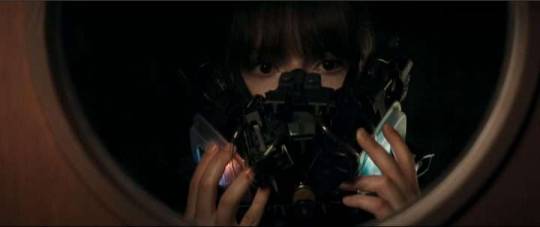
MIGUEL LLANSÓ’S INFINITE SUMMER IS A TRIPPY, TRANSHUMANIST FEAT OF FILMMAKING Estonia-based Miguel Llansó (CRUMBS, JESUS SHOWS YOU THE WAY TO THE HIGHWAY) is a singular gift to cinema. Fantasia is proud to be bringing the visionary iconoclast back to Montreal for the World Premiere of what may be his most compelling creation yet: INFINITE SUMMER, a trippy transhumanist sci-fi exploration vibrant with humor, poignancy, and gonzo invention. On a summer break, Mia and her friends try a meditation app that that’s somehow related to the operating system of the Tallinn Zoo, changing in the body chemistry of its users into something between pollen and cosmic dust. Mia will need to choose between saving her friends or joining them. An astonishing film, produced by legendary US producing partners Allison Rose Carter and Jon Read (EVERYTHING EVERYWHERE ALL AT ONCE, AMERICAN HONEY), Rain Rannu (CHASING UNICORNS, THE INVISIBLE FIGHT), and Tõnu Hiielaid (KRATT), and Llansó himself, starring Hannah Gross (Netflix’s Mindhunter), Johanna Rosin, and Teele Kaljuvee-O'Brock.
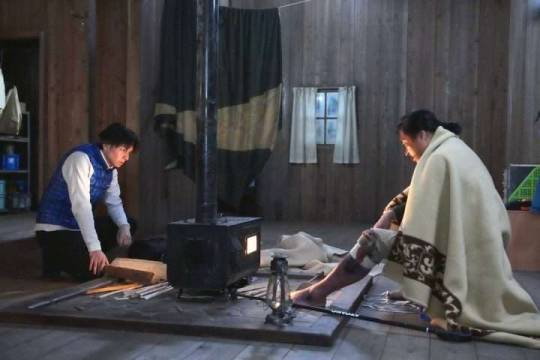
TRUTH BE TOLD, CONFESSION IS A MASTERFULLY CRAFTED SINGLE-LOCATION THRILLER Every Winter since Sayuri’s tragic disappearance sixteen years ago, Asai and Jiyong climb the mountain where it happened to honor her memory. However, an intense blizzard and a catastrophic injury convince Jiyong he’s done for and, before forcing Asai to leave him to die, he shares a devastating revelation. Asai returns, however, after finding a nearby cabin and now, isolated for the night, the two have to deal with Jiyong’s not-so-last words... the hard way. Two award-winning Fantasia legends, director Nobuhiro Yamashita (LA LA LA AT ROCK BOTTOM) and actor/writer/director Yang Ik-june (BREATHLESS), along with superstar Toma Ikuta (THE MOLE SONG trilogy), team up to adapt a beloved manga into a narrative and technical achievement, one of the best single-location thrillers ever created. With stellar performances and masterful direction using every inch of his set to generate maximum tension, CONFESSION flirts with perfection at every level - and must be experienced in a theatre.

JAYRO BUSTAMANTE’S RITA WILL HAUNT YOUR MEMORY AND BREAK YOUR HEART Following up on the international success of his brilliant LA LLORONA (2019), director Jayro Bustamante’s RITA fuses mythical fantasy and whimsical imagery with themes of childhood innocence and the potent emotional register of a story based on a harrowing real-life event, wherein 41 young women needlessly burned to death inside a Guatemalan orphanage in the midst of a protest about inhumane conditions. At its core is the powerful performance of Guiliana Santa Cruz, who speaks for all the young women who suffered. As a result, the story speaks much to the power of female anger, and yet, not once does the director lose sense of the fact that at its heart, Rita’s tale is one of girlhood, of dreams, of an innocence lost, and regained within the bosom of female solidarity.

THIS MAN BLENDS WESTERN INSPIRATIONS WITH J-HORROR TROPES IN A PERFECT MELTING POT OF TERROR An inexplicable wave of tragic deaths plunges two investigators into the heart of a fateful whirlwind, where logic and facts have no value as a far-fetched urban legend seems to come true. A mother plagued by terrifying dreams, seeing her friends and colleagues disappear one after the other, and her family witness the horror unfold. Director and screenwriter Tomojiro Amano (TRAPPED IN MAKYO) skillfully fuses the styles of Eastern and Western classics, referencing RINGU, IT FOLLOWS, and A NIGHTMARE ON ELM STREET among others, to create an intimate, oppressive work that constantly keeps viewers on the edge of their seats as it slowly and subtly unveils the pandemic-like slaughter outside. At the crest of the international horror-film harvest of 2024, already a banner year, THIS MAN is sure to lodge itself in viewers' memories. With such potential, a Hollywood remake wouldn’t be surprising.

LOWELL DEAN’S DARK MATCH CONJURES SIX-TIME CHAMP CHRIS JERICHO AS A CULT LEADER! After his success with the WOLF COP films, Canadian filmmaker Lowell Dean switches it up and takes horror to the ring! When small-time wrestlers get a big payday for a private gig, they jump at the chance for fame and fortune, but the event, run by a mysterious leader who calls himself “The Prophet,” demands plenty of blood on the mats and involves a sinister, demonic deal! Set in the wrestling heyday of the 80s, DARK MATCH is an action-packed rumble on the ropes shot by acclaimed cinematographer Karim Hussain (INFINITY POOL, POSSESSOR). Starring wrestling legend Chris Jericho as the charismatic leader of its bloodthirsty cult, Ayisha Issa (TRANSPLANT), and Steven Ogg (AMC’s The Walking Dead), you’ll get more than your share of intrigue, action, and gore inside this ring! Septentrion Shadows section.
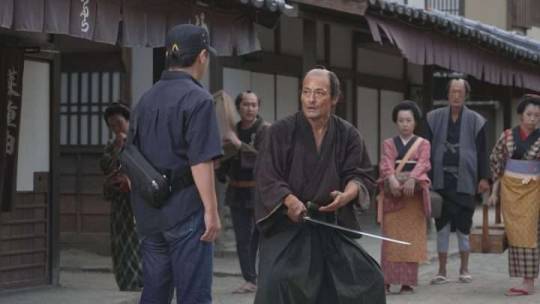
A SAMURAI IN TIME IS WORTH THE TIME AND TRAVEL TO SEE An Edo-period swordsman is flung into the future, arriving in modern Kyoto to confront utter confusion—and an acting career. The medieval warrior transported to modern times is a variant of the time-travel subgenre that has been explored many times around the world. Award-winning writer/director Junichi Yasuda (GOHAN), however, offers a take on the theme that’s not only clever, funny, and distinctly Japanese, but remarkably poignant. Shot on location at Toei Studios Kyoto, A SAMURAI IN TIME is held together by the subtle and convincing performance of lead actor Makiya Yamaguchi. More than just a fun fish-out-of-water fantasy, it’s an homage to samurai cinema as it wanes as surely as the shogunate once did.
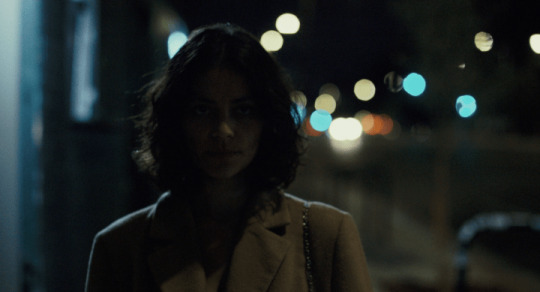
SWIPE RIGHT ON ELRIC KANE’S DATING APP CHILLER THE DEAD THING A young woman, lost in a series of meaningless connections through dating apps, falls in love with a charismatic man who is hiding a dark secret that turns her affair into a dangerous obsession. Smart, tragic and unsettling, Pure Cinema host Elric Kane’s first solo-directed feature is a character-driven supernatural nightmare that explores the demons of modern dating in ways that are both horrific and disturbingly relatable. Swipe right on this profound piece of genre cinema that is destined to become a horror classic. Staring Blu Hunt (Netflix’s Another Life), Ben Smith-Petersen (MAD MAX: FURY ROAD), Katherine Hughes (ECHO 3), and John Karna (SCREAM). Co-Written by Webb Wilcoxen (The Frontier). Produced by Monte Yazzie, Matt Mercer (BLISS), and Rebekah McKendry (GLORIOUS).
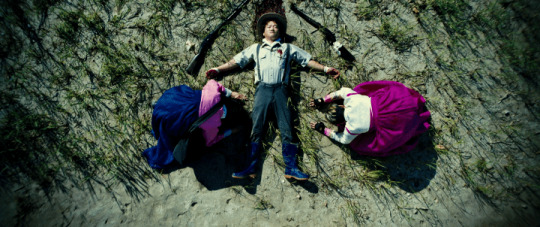
MASHING UP GENRES, MASH VILLE IS A KOREAN CULT CLASSIC IN THE MAKING Someone has died after drinking the bootleg liquor brewed by Se-jong and his two younger brothers. While on a mission to retrieve their deadly booze before another person perishes from it, they come across two homicidal cultists who are terrorizing the villagers. The love that director Hwang Wook (LIVE HARD, DOG EAT DOG) harbors for the Western, action, and comedy genres shines through from start to finish with stylish cinematography, quirky characters, and an incredibly entertaining screenplay. Most importantly, pitch-black humor abounds. Hwang and company commit to their absurdity, and it’s an absolute blast, a genre-mashing crowd-pleaser sure to be a Korean cult classic as time goes on.

LUCÍA PUENZO’S ELECTROPHILIA CASTS A SUBVERSIVE NEW VISION A woman wakes up from a coma six weeks after being struck by lightning and finds herself compulsively drawn to electric currents as her body’s workings begin to change. She soon joins an underground support group of strike survivors led by a dangerously charismatic doctor, opening a doorway into unexpected new explorations. A gripping, sensorial experience with a visceral emotional core, ELECTROPHILIA is the latest creation from Cannes-award-winning Argentinian filmmaker and novelist Lucía Puenzo (THE FISH CHILD, XXY). Reminiscent of CRASH-era Cronenberg, it is a subversive and beautiful genre work, a different kind of self-discovery tale, and a new breed of dramatic thriller. Starring Mariana Di Girolamo (Pablo Larrain’s EMA), German Palacios (EL RAPTO), and Guillermo Pfening (THE GERMAN DOCTOR).

A MORALLY CHALLENGING TALE OF REVENGE, PENALTY LOOP TAKES A FAMILIAR THEME ON A DEVILISHLY TWISTED PATH https://www.youtube.com/watch?v=E-uwF0-__uY Left bereft by the wanton and inexplicable murder of his girlfriend, Jun chooses his own justice, carefully planning the perfect murder of the man who led him to become what he wants to eliminate. Once the vengeance is consummated, he wakes up with a confirmed sense of déjà-vu and his target alive and well, repeating the same routine as the day before. Offering a breathless, dark, and innovative variation on the time-loop concept, writer/director Shinji Araki (THE TOWN OF HEADCOUNTS) establishes himself as a sure thing in contemporary Japanese genre cinema with this unpredictable, shocking narrative that constantly twists and turns toward a conclusion that’s as satisfying as it is devastating. Carried by a convincing duo of actors in perfect sync, PENALTY LOOP is an accomplishment condemning Araki to return to the forefront with each of his future projects.
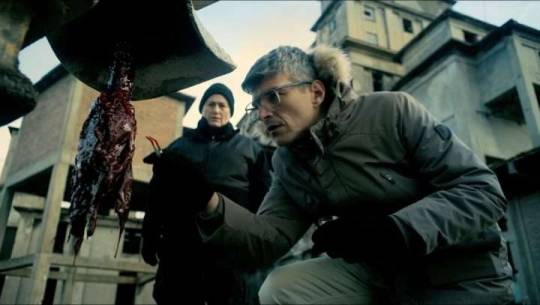
THE ADAMS FAMILY BIRTH CREATURES AT A SERBIAN FRACKING SITE IN HELL HOLE A road trip through Canadian oil fields conjured up fantasies of secrets deep in the dirt for the Adams family, and inspired them to create HELL HOLE, an indie rock-n-roll monster movie set at a far-away fracking site. Known for their DIY ethos, John and Lulu Adams and Toby Poser, partnering with Shudder, have joined the team behind The Last Drive-In with Joe Bob Briggs and FX legend Todd Masters to shoot their latest in Serbia with a local cast and crew. Absurd, mutinous, and transgressively comical, Hell Hole is old-school sci-fi horror, yet in typical family fashion, they subvert the genre with textures of biological and environmental horror in tandem with questions of gender and bodily autonomy. This will be the fourth time that Fantasia World Premieres work from the gifted filmmaking family, following launches of THE DEEPER YOU DIG, HELLBENDER, and WHERE THE DEVIL ROAMS.
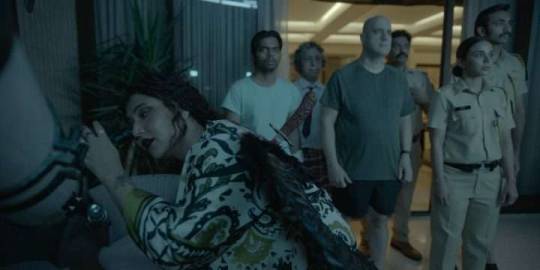
DEAD DEAD FULL DEAD MUTATES THE WHODUNIT GENRE Junior police officers Balraam and Zubeida make a cute couple, but not the most diligent detectives. Called to a posh apartment tower to investigate a reported murder, the seemingly straightforward case quickly becomes a conundrum that would confuse even Sherlock Holmes. When the victim herself returns from the afterlife, matters become even more muddled, and soon enough the question isn’t who killed her... but who didn’t?! With the deadpan delirium of his debut feature, Mumbai-based editor and filmmaker Pratul Gaikwad offers a very odd, otherworldly mutation on the much-loved mystery-comedy genre. Featuring paranormal powers and multiple manias, cosmic wonders and covert class warfare, celestial bureaucracy and dysfunctional love, and even a supernaturally transformed goat, Gaikwad’s surreal whodunit offers a bit of everything... except perhaps proper law-enforcement procedure.

VOIVOD: WE ARE CONNECTED OFFERS A THUNDERING TRIBUTE TO LEGENDARY PROG METAL PIONEERS From the moment they exploded out of Jonquière in the early ‘80s, Voivod have been widely hailed as one of the most original and influential metal bands in the world. Years in the making and produced with full access to the band’s archives, Felipe Belalcazar’s illuminating VOIVOD: WE ARE CONNECTED brings the story of a groundbreaking 40+ year career to the screen with energy, insight, and a palpable sense of love. The long-awaited doc will be launched in the very province that birthed the band and Fantasia couldn’t be prouder. With appearances by Tobias Forge (Ghost), Mikael Akerfeldt (Opeth), Jason Newsted (Metallica – and brief Voivod member), Zach Blair (Rise Against, GWAR), Tom G Warrior (Celtic Frost, Triptykon), and Ivan Doroschuk (Men Without Hats), among many others. Docs from the Edge section.

A FANTASTICAL JAPAN RETURNS IN FLY ME TO THE SAITAMA: FROM BIWA LAKE WITH LOVE After stealing hearts at Fantasia 2019, where FLY ME TO THE SAITAMA won the Audience Award for Best Asian Feature, director Hideki Takeuchi returns to a fantastical version of Japan—“definitely not a portrayal of any actual place”—with a completely original story independent from the ’80s manga from which it takes its name. Read the full article
#28thfantasiafilmfestival#fantasia#fantasiafilmfestival#fantasiainternationalfilmfestival#festival#filmfestival#Horror#indiefilm#indiehorror#montreal#movies#shelbyoaks
2 notes
·
View notes
Photo

Midnighter and Apollo, the Gods of Night and Day
Lucas Trent and Andrew Pulaski were both products of Science City Zero, an attempt by Henry Bendix and Randall Dowling to implement the transhumanist procedures that Kaizen Gamorra would later use in establishing his post-human City. Lucas had a series of super computers installed along his spinal column, as well as injections of nanomachines to keep his body strong enough to survive the cybernetic transplants, combined with a series of both VR and IRL combat training simulations based on both the Golden Age and Modern Day Batmen, Lucas slowly lost all memory of his childhood and fully began The Midnighter.
Apollo, likewise, has largely abandoned the identity of Andrew, but for a different reason: he actually is the Greek God Apollo. After being killed by Ares (leading to a brief, unpredicted eclipse in the middle of a battle), Apollo was able to incarnate in a human vessel, as other members of his family did over the aeons. This gave him immense power, but due to Bendix and Dowling’s overly rationalist view of reality, led to Apollo being categorized as unstable and held back from Stormwatch Prime into Stormwatch Zero, an attempt by Bendix to create his own Justice League.
During this time, the two men found little comfort in the world outside of each other. The scientists in charge of Science City Zero had hoped for emotionless killing machines, but the lovers were too powerful and too useful at that point to easily separate.
After Bendix was deposed and Dowling and Gamorra both defected to their own projects, Midnighter and Apollo would agree to join Jenny Sparks in her new endeavor. Though, unlike their teammates, chose to remain monogamous with each other.
Apollo was almost as excited to meet Superman as he was being reunited with his sister, Diana, after all this time.
Midnighter still maintains a single dream above all others: getting to kick Batman’s ass, though some of his independent wetwork eventually led him to long, on-and-off rivalry with Dick Grayson.
39 notes
·
View notes
Text
Why Genre Fiction?
All fictional renditions of LGB people and same-sex relationships have been suffering in recent years. It's become harder to get excited when authors and screenwriters of any genre promise representation in their upcoming works, because we've seen all too clearly how a lot of that representation turns out: gay and lesbian characters guilted into "accepting" trans characters of the opposite sex by way of accepting them into their beds (while those who don't comply are demonized), gnc lesbians renouncing their own womanhood and distancing themselves from lesbianism while their girlfriends are left to flounder, breathing new life into age-old homophobic refrains like "male and female were designed to go together for reproduction" or "if you're going to date butches why not just date a man?"
These are the tropes that hit all types of fiction equally hard, and are just as likely to rear their heads in our day-to-day lives as well. But at the end of the day, the solace we're able to take is that we are still tethered to reality, and physical, material reality will always be on our side. Homosexuality exists, it's based on one's observable, biological sex, and it's not going anywhere.
Genre fiction then, presents something of a different beast. Here, the laws of reality itself are the will of the writer, and as a lifelong fan of genre fiction, I have witnessed many of the recurring ways that that will makes itself known through worldbuilding and the design of the story's characters.
All too often, especially in recent years, it says the same thing: "I am using my artistic license and control over this fictional world to design my own reality, and this reality of my design is overtly hostile to homosexuality."
How does this play out in practice?
It looks like sci-fi predictions of an "ideal" sexually liberated future where all boundaries and all distinct sexual orientations have been rendered obsolete: no longer are there discrete groups of heterosexual, homosexual, and bisexual people, rather everyone has become "pansexual" or "omnisexual," or otherwise happily free of labels. Gay and lesbian people have been quietly eliminated from this future, and everyone is open and available to the opposite sex.
It looks like legitimization of the body/soul dichotomy, a well-worn fiction staple that is all but taken for granted in the fantasy genre in particular, but also appears in the form of transhumanist sci-fi, always positing that the true essence of a person is something immaterial and the body is ultimately insignificant. Love stories, by extension, become stories of "hearts not parts," a paradigm where sex-based attraction is viewed as unspeakably superficial and morally indefensible, especially when characters possess the power to alter their bodies and change sex at will.
It looks like the presence of characters, be they gods, elves, aliens, angels, vampires, robots, immortals, or otherwise, that have surpassed humanity in longevity and wisdom, and who in their enlightenment all seem to have arrived at that same "hearts not parts" conclusion. Why limit yourself when you have eternity, right? Or alternately, why succumb to the base impulse of having sex at all? Pansexual or asexual, in either case sex-based attraction is considered so far beneath them as to not even be worth considering.
Genre fiction is the focus of this blog because the current landscape of popular belief about gender/sexuality has monopolized its unique ability to explore impossible/implausible ideas, and turned them explicitly into social commentary on the inevitable obsolescence of gay and lesbian sexuality.
The aim of this blog is to discuss the conventions of genre fiction as they pertain to sexuality in further depth. I am hardly the only same-sex-attracted person who has been alienated by these trends, and it's high time we gained some narrative control back.
Expect here the dissection of tropes, plenty of discussion on existing genre fiction and its fandoms with both good and bad handling of LGB characters, and ideally some perspectives from the other side of the creative process: how do we as LGB creatives turn the worlds of speculative fiction into places where we can belong again?
31 notes
·
View notes
Note
i was just reading your old dumbing of age posts, and also i've been carlaposting (see my #carla rutten tag if interested). There's still not a lot of carla appearances but she's been on my mind (maybe cause I always latch on to the most transhumanist character, even though they're usually not that transhumanist?) so I wonder if you have any carla thoughts you'd like to share from the four years since you made those doa posts
oh hi there! Glad those old livereads are still entertaining people. lessee...
ngl, when I read this ask I mostly just thought "who?" since I have definitely not been keeping up with Dumbing of Age in that period (or webcomics in general really - K6BD is the only one I check semi-regularly nowadays.)
I really need to add some of the webcomics I used to read to Tachiyomi (assuming they're supported), but they're in that awkward place where I remember the early strips well enough that they're not super exciting to reread, but I don't remember the later strips well enough to find my place or indeed, remember who any of these people are. some point I just need to lie down with, say, Gunnerkrigg Court or Honey Crab and catch up on what I've been missing.
anyway! you asked about Carla! a quick check of the wiki confirms she was the acerbic, roller skating, trans girl character, who I was very taken with at the time I read it. I guess she had a lasting impact on me, in that Dumbing of Age reminded me that 1. roller derby exists and 2. they let trans girls play it, which I have since made a couple of attempts to do (the most recent being cut off by the pandemic, but hopefully I won't have lost too much when it's safe to skate once more). so thanks for that one Carla! I wonder what sarcastic comment you'd make.
since I don't really remember this comic very well, that's about all I can say, but let me go on anyway.
I guess I'm no longer in a place where I fixate on any and all trans girl characters in fiction, and instead come at them from something of a more analytical perspective these days. Carla seems fun though!
I was totally unaware that she was based on a robot car who became a gynoid from It's Walky!; all that went right over my head so at the time I read the comic, she was just a surprisingly cool character. obviously a lot of trans girls identify with inanimate objects in some way - robots most often, but really can be anything - so if she does have a car TF fetish going on later, good for her lmao. sure hope someone showed her Adolescence of Utena.
from the handful of strips I re-sampled, I don't think I'd get along great with Carla - no doubt I'd take some of her constant stream of mean-but-not-serious jokes to heart, and we'd both get frustrated with each other. I guess you could argue some of that would be Willis's particular voice, and the somewhat affected, sharp exchanges of a gag-a-day webcomic, rather than something 'essential' to the character. it's curious to imagine how my own personality might get simplified and abstracted if I had to be a webcomic character.
uh, what else, what else? the business model of Dumbing of Age is pretty curious to me - not the patreon part, that's pretty universal now, but the part where he draws porn of his characters and sells it on Slipshine. I feel like it wouldn't be too difficult develop that into some kind of analysis of how the emotional connections we form with fictional characters factor into erotica, a niche that often goes unfulfilled hence fanfiction etc.; in any case Willis approaches it with a certain irony (you go on slipshine and the thumbnail says 'Walky does a sex'), I guess to puncture the likely embarassment of someone paying money for porn of a webcomic they like?
in any case, idk if it's just something he does for fun or like, a major source of income, but in any case it's unusual, since in my experience webcomics are usually either strictly sfw (the vast majority), strictly porn/sex comedy (e.g. I Roved Out, Oglaf, basically all the other content on Slipshine), or mostly sfw stories aimed at adults with the occasional nsfw scene as fits the narrative (e.g. Souls Foreclosed, Kill Six Billion Demons, The Less Than Epic Adventures of TJ and Amal, The Meek). 'read the story, now wanna pay for the porn?' seems like a model that makes some kind of cynical sense, so I'm surprised more authors don't adopt it.
Anyway, this is a little interesting because I have been wondering about making another attempt at creating a webcomic, since animation takes approximately forever to do so if I want to tell an original story, 'webcomic with occasional animation' in the manner of Homestuck, Honey Crab or Ava's Demon may work as a compromise. I don't think I could manage a perpetual, years-long webcomic. I have no idea how someone like Willis or the Schlock Mercenary guy (is that still going?) manages to keep producing enough material to fill up the buffer for all those years of daily comics but it's very impressive. Still, the comics I would aspire to draw like are the more 'graphic novel' kind, with big pages, varied panel layouts and camera angles, maybe even playing around with web tech to add a little interactivity and motion. Stuff that would keep it interesting and novel to create, punch through that ADHD.
Though thinking about it, Willis's strength is, I guess, much like Hussie - developing a huge cast of reasonably fleshed out characters, drawing them quickly on model with a variety of expressions, and having the confidence to synthesise storylines and let them play off each other. Many of the most successful webcomics lean on something similar: you can use all the gimmicky 'infinite canvas' techniques you want, and that can really accentuate a project and take it to another level, but the artistic Cordyceps that really worms its way into peoples' brains is "just" that character writing. Without that you still have nothing... good to remember...
5 notes
·
View notes
Link
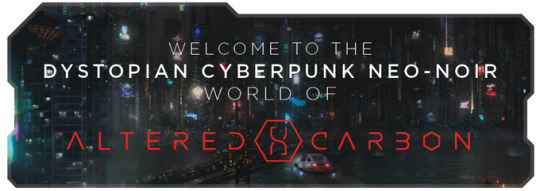
Working alongside Skydance Television and the incredible team behind the hit Netflix TV series, we’re excited to immerse you in the neon-drenched cyberpunk sandbox of Altered Carbon with our official tabletop RPG.
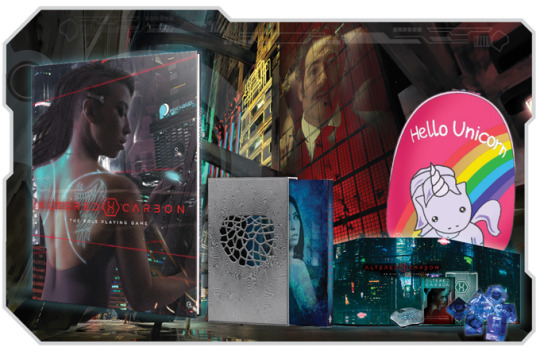
In this transhumanist vision of the future, the human mind is nothing more than digital code – Digital Human Freight – saved and stored in a Cortical Stack, advanced technology that allows you to “re-sleeve” your entire consciousness into a new body. You can wear any body you can afford, transmit your mind across the cosmos in an instant, and, if you’ve got the credits and political cachet, you can re-sleeve time and again for centuries, accumulating enough wealth and power over the millennia to become the societal equivalent of an immortal god.

“Reality is so flexible these days, it’s hard to tell who’s disconnected from it and who isn’t. You might even say it’s a pointless distinction.”
Whereas character death is a natural occurrence and ever-present threat in tabletop RPGs, Altered Carbon: The Role Playing Game offers a unique angle on the concept. As opposed to creating a brand new character, players will have the opportunity to transfer their character’s consciousness, memories, and experiences into new Sleeves post-death… but at a cost.
Mind you, immortality is not invincibility. Losing a Sleeve is a life-altering setback, and “Real Death” awaits anyone whose Stack is destroyed. That being said, Sleeves introduce their own refreshing challenges to players and storytellers alike. Augmentations can instantly upgrade your athleticism, but a world-class surgeon in an unadjusted Sleeve can botch a basic procedure. The possibilities for characters and campaigns may change from one Sleeve to the next… making long-term gameplay more versatile, while empowering the story to steer character advancement at its own pace.
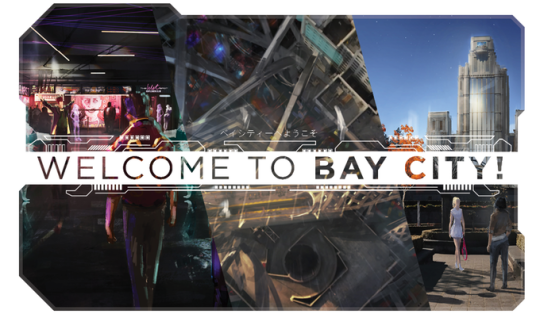
Bay City is divided into three major territories – the Ground, the Twilight, and the Aerium – each a world of its own; ruled by different kinds of people, playing games for different kinds of stakes.
The Ground: The underclass — known as “grounders” due to their inability to inhabit the skyscrapers as residents or personnel — continues to soar in numbers. Grounders are satiated with automated dispensed foodstuffs, public housing, and a neon-soaked parade of carnal pleasures. On paper, the features of the city seem almost Utopian, but the majority serves only as cheap labor for the vast bureaucracies of the Protectorate and the Meths whose own lives are glittering paradises in comparison to the empty, endless grind of the greater population.
The Twilight: A razor thin middle class serves as administration, managers, and highly skilled technicians to service the various technological marvels of society and its endlessly expansive bureaucracies. These skilled individuals are said to inhabit The Twilight, somewhere between the darkness of grounder society and the dazzling brightness of the high life of meth aristocracy. Most aren’t far removed from some criminal element, either by choice, close relation, or the occasional contractor through one of their shell corporations. You’ll scarcely find a programmer who hasn’t moonlighted as a “Dipper” at some point. Most dabble with decadence or crime (often the white-collar variety), if only to search for some form of existential purpose... The extra money doesn’t hurt either.
The Aerium: This network of skyscrapers is the domain of the meths exclusively. Their towers pierce the sky by several times in height the normal skyscrapers of Bay City. Each tower has the luxury of supporting a multitude of sprawling estates, all free and far above the need to see the rabble below, the unseen underclasses toiling under permanent cloud cover. Only specifically registered air vehicles and police aircars are permitted to fly anywhere near this complex. The much vaunted Suntouch House is part of this complex.
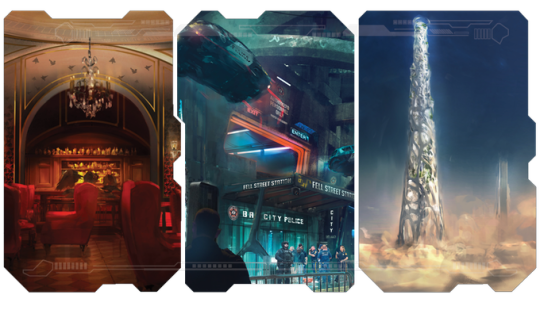

The core edition of Altered Carbon: The Role Playing Game takes place on Sol (Earth) in the year 2384. With the help of a gamemaster (GM), you and your friends can create your own stories and Sleeves in Bay City, the futuristic Californian metropolis that serves as the main setting of the first book and Season 1 of the Netflix series.
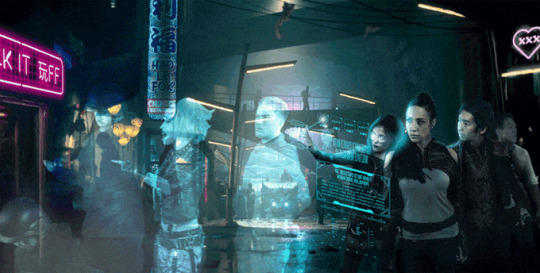
The human eye is a wonderful device. With a little effort, it can fail to see even the most glaring injustice.
Take control of police, military, technicians, artificial intelligence (A.I.), special operatives (CTAC), and even the influential elite of high society (Meths) as the core neo-noir themes of Altered Carbon promise endless sci-fi adventures:
Mystery — Solve the unfolding mystery. The gamemaster themselves may not even know who the culprit is at the beginning of the story!
Intrigue — Augments and re-sleeving don’t come without their own costs. Story-driven mechanics challenge players to balance their personal egos and baggage, influencing how players interact with one another and how their characters develop over time.
Action — An original game engine uniquely designed for the RPG, delivering a strategic yet dynamic zone-based combat system with exotic high-tech weaponry and streamlined options for more action-oriented gameplay!
Drama — The twisted reality of transhumanity enables players to create challenging stories, complex characters, and century-spanning epics, all which explore the darkest aspects of human nature that the value of life and fear of death once held in check. When murder is little more than extreme property damage, transhumanity is the perfect playground for noir storytelling that delves into the moral depths of our own humanity.
Working in tandem with Skydance Entertainment, we're able to provide a deeper dive into the world of Altered Carbon. As a result, we're expanding on elements of lore, and the colonized worlds that previously we unexplored until now!

https://drive.google.com/open?id=1Tee2_LgSiUPM4arGX6-IE5pIpre7Q0LF
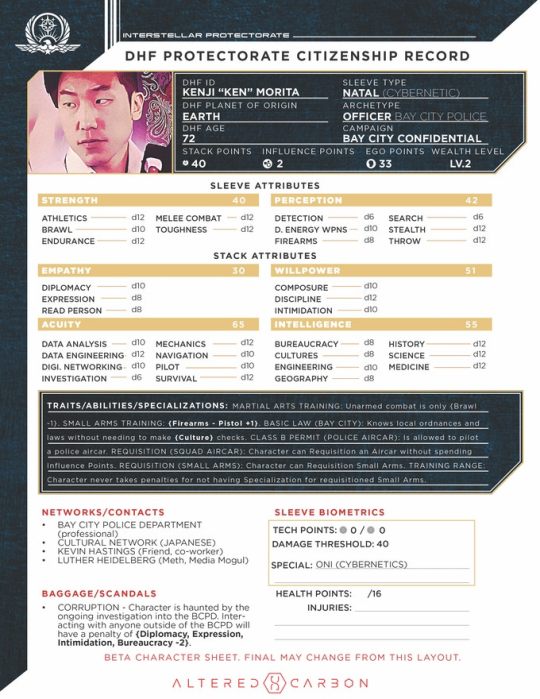
Click for a clean Character Sheet
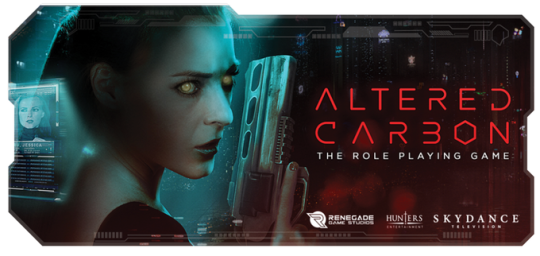
The Core Rulebook contains everything gamemasters and players needs to play the game.
Building a Neo-Noir Narrative. Build an authentic noir experience with a multi-layered mystery that unravels over time. Plot twists, MacGuffins, red herrings, and informants all provide the ever-adjusting structure you need to bring mystery and intrigue to your players without the need to pre-plan every detail at the start.
Starting Adventures. Enjoy two complementary modules designed to teach you everything you need to know to run the game and teach players the Hazard System.
Creating a Character. Ready to jack in? Pick an archetype: Civilian, Socialite, Official, Criminal, Technician, or Soldier. Generate core attributes like Strength, Perception, Empathy, Willpower, Acuity, and Intelligence. Game elements like Stack Points, Health Points, Ego Points, and Influence Points help flesh out your characters and determine how they perform and progress through the story.
Baggage. Your time in Altered Carbon takes its toll, as damage to your ego builds up over the years… as do the ghosts of your past deeds from sleeve to sleeve.
Variant Characters. Explore a range of unique playable and non-playable characters such as artificial intelligence beings, envoy soldiers, and high-class meths.
Re-sleeving. The body is merely a shell, and death is not the final destination. Each Sleeve comes with its own strengths and shortcomings. An impossible task in one Sleeve may be child’s play in another. Meanwhile, your enemy could be wearing your friend’s sleeve, so use your intuition and ingenuity to observe the details, break through the obvious, seek out new solutions, and stay alive.
Tons of Traits. Tier-based Trait system allows you to easily build your own Archetypes or assign a set of unique abilities that complement one of our pre-set character builds, with plenty of crossover options so that no two Archetypes are really the same.
Wealth Level Based Economy. Rather than nickel & dime every transaction, players can acquire gear and supplies adjacent (or above — if they’re willing to risk greater consequences) to their Wealth Level in order to keep the focus on story momentum.
Technology & Equipment. Nemex, Shard Pistols, Portable AI Emitters, ONI Interfaces, Merge9; the Core Rulebook provides all the mechanics for purchasing, acquiring, and modifying a plethora of futuristic weapons, apparel, and gadgetry with an expansive list of customizations for nearly every item.
Expanding the Altered Carbon World. While the Core Rulebook focuses on Bay City and Season 1 of the series, we’ve got big plans with Skydance who is currently in production for Season 2, and we'll be working alongside them to discover more ways to explore the colonized worlds in future RPG supplements. In the meantime, fans can explore Osaka and other parts of Earth 2384 via our stretch goal modules listed below.


Altered Carbon: The Role Playing Game will employ the Hazard System – a brand new game system that finds inspiration in popular engines like the Cortex System, Savage Worlds, and Outbreak: Undead.. all while delivering unique gameplay specifically designed for this RPG.
SKILL DICE: Actions are done using an appropriate die type depending on your level of skill.
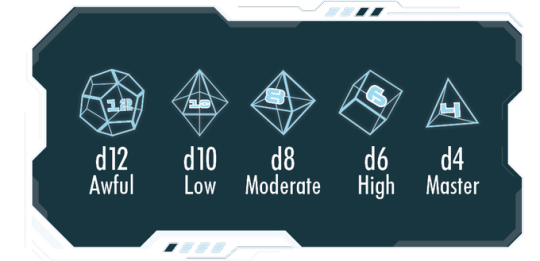
Which are rolled against a Target Result (TR) assigned by the GM or Scenario:
12+ - Trivial
10-11 - Easy
9-10 - Normal
7-8 - Tricky
5-6 - Challenging
3-4 - Complicated
0-2 - Nearly Impossible
With success determined by rolling EQUAL TO OR UNDER the Target Result. The difference between the result and the TR are the degrees of success/failure generated.
Natural (rolled) 1's are considered an “Ace” - and always succeed with a flourish.
Besides the basics of rolling equal to or under the Target Result, the Hazard System provides a list of easy-to-apply modifiers that will help to quickly and contextually flush out a scene.
Bonus Dice: Players can be awarded Bonus Dice, which can be of any Die Type. Bonus Die results can take the best results (serves as an advantage).
Luck Dice: When luck plays a factor on the outcome (for better or worse), Luck Dice of any Die Type may add to Skill Check Results. Even players with D4s as Skills may fail if luck turns against them. Luck can even displace Difficulty altogether in the right situation.
Example:
Christopher is trying going toe to toe with an off-world assassin in a synthetic Sleeve but decides the fight is a little outside of his league — so he wants to escape. He could simply dart away, in which the GM will ask him for an Athletics - 5 (challenging) roll. He has a D10 in athletics so its reasonable. Or he could use a chaff bomb, which will disrupt the synthetics sensors and maybe cover his tracks. That just requires a Throw - 10 (easy), and even with a D12 that shouldn't be a problem... shouldn't...
Since all dice can roll low, there is ALWAYS a chance of success.
=========================================================
Kickstarter campaign ends: Wed, March 4 2020 6:03 AM UTC +00:00
Website: [Hunters Books] [facebook] [twitter]
117 notes
·
View notes
Text
How our screen stories of the future went from flying cars to a darker version of now
by Aaron Burton

Years and Years begins with the re-election of Trump in the US, and the election of unconventional populist Four Star Party in the UK. BBC/HBO
Fans of Ridley Scott’s 1982 masterpiece Blade Runner returned to cinemas for an unusual milestone: history catching up with science fiction.
Blade Runner opens in Los Angeles, in November 2019. Furnaces burst flames into the perennial night and endless rain. Flying cars zoom by. The antihero film-noir detective, Deckard (Harrison Ford) has seen too much, drinks too much, and misses his mother between “retiring replicants”.
As in “Back to the Future day”, (October 21, 2015), which marked Marty McFly’s journey into the future in the 1989 film, the Blade Runner screenings came with a flurry of discussion about what the filmmakers got right and wrong. Environmental collapse, yes. But where are our flying cars?
youtube
So: what now that the future is here?
Our current versions of near future stories - namely the television series Black Mirror (now on Netflix) and SBS’s Years and Years - explore more extreme versions of the present.
Charlie Brooker’s Black Mirror is an anthology of standalone episodes, produced between 2011 and 2019, each set in a slightly different, undated, near future.
Years and Years, written by Russell T. Davies, bravely spans 2019 to 2034 with each episode leaping forward a few years through striking montages of fictional news events: the collapse of the European Union, the US leaving the United Nations, catastrophic flooding, mass migration, widespread homelessness.
We are in a very familiar world. The “near” is depicted in a realistic way through identifiable locations, documentary-style visuals, news footage, and lifelike dialogue.
youtube
Technology: good and bad
Back in the real world, the future in the 21st century is unfolding in the palm of our hands. Elections are won and lost on social media, Sydney is covered in smoke. The rate at which technology is altering our lives is rivalled only by the rate we’re transforming our planet.
These shows explore these rates of change. In a 2016 episode of Black Mirror, “Nosedive”, every interpersonal interaction becomes a transaction: an extreme version of Uber Ratings with China’s Social Credit System.
Lacie (Bryce Dallas Howard) is an ambitious young professional excited by the opportunities higher ratings open up, such as discounts on luxury apartments, but being pleasant to her barista and workmates only gets her so far. So begins a perilous spiral of trying too hard to be liked, echoing the personality-as-product phenomenon of social media influencers around the world.
youtube
The standalone episode format of Black Mirror means it can be challenging to develop empathy for characters, consequently the interest often rests on the single concept or final twist. The episode “Striking Vipers” explores the possibility of extra-marital love between best mates in Virtual Reality; “Hang the DJ” envisions dating apps as an authoritarian apparatus.
Most episodes are neatly wrapped up for viewers to escape to for pure entertainment – but also to escape from each dystopian possibility.
In Years and Years, we follow one Mancunian family over 19 years. The series opens with Trump re-elected for a second term. In the UK, the unconventional populist Four Star Party, led by straight-speaking Vivienne Rook (Emma Thompson), rides to success on the back of social instability.
Sci-fi concepts are introduced early on so we can explore their evolution and implications. In the first episode, teenager Bethany declares herself “trans”. As progressive parents, Stephen and Celeste immediately comfort their child, who they presume is transsexual.
youtube
Bethany shrugs, “I’m not transsexual … I’m transhuman”. A concept not lost on Blade Runner fans who may be aware of transhumanist gatherings in Los Angeles in the 1980s, transhumanism is premised on the idea that humans have breached evolutionary constraints through science and technology. Biology is a restriction to the possibility of eternal life.
Disgust and dismay ensue from parents unable to comprehend why their child wants to rid her flesh and live forever as data. Through the course of the series we see how Bethany’s transhuman ambitions influence her personal relationships, health, career trajectory, and political activism.
It even starts to feel normal.
Years and Years delicately resists portraying a dystopia, allowing room for technology to demonstrate a positive influence on society. “Señor”, the ubiquitous virtual assistant, connects the Lyons family whenever they wish. Like Alexa or Siri, Señor is always at hand to answer questions – but more importantly, facilitates an intimacy that could easily be lost to technological isolation.
In 2029, grandmother Muriel digs up the dusty digital assistant Señor because she misses its company. By now, virtual assistants are embedded into the walls and omnipresent digital cloud but the Luddite grandmother resists.
“I like having something to look at, I’m not talking to the walls like Shirley Valentine,” she says.
It’s moments like these that remind us of our agency over technology and hint at its revolutionary potential to connect us all.
Lessons for the present
While classics like Blade Runner looked to the future to ignite our technological desires, near-future fiction reveals how new technologies are injected into our lives with little choice as to whether we should adopt them and little thought to their long-term appropriateness and sustainability.
These shows ask us to be critical of what might seem like minor developments in technology and politics. In an age of rapidly changing political landscapes and the climate catastrophe, it can feel like we are approaching the final frontier. In creating stories set in the near, instead of the far, future, science fiction provides valuable lessons for the present.
In other words: the choices we fail to stand up for in the near-future may prevent us from having a distant future at all.

About The Author:
Aaron Burton is a Lecturer in Media Arts at the University of Wollongong
This article is republished from our content partners over at The Conversation.
12 notes
·
View notes
Text
4 notes
·
View notes
Photo

gen:LOCK Review
Created by: Gray G. Haddock
People expected a webcomic or manga review today. But it was I, Exceedingly Relevant Review For Today! In honor of April 1st and all of Rooster Teeth’s content being free for the day, I am going to help sell you on why your choice for part of that day should be devoted to. And trust me, you definitely will want to check out this show if you are interested in mecha anime, war stories, or transhumanistic storylines. Yes, that last one is extremely jarring compared to the other two, but it is very much a key part of the show’s later episodes.
But, start at the beginning. Best place to start and all that. gen:LOCK is a 3D-animated show starring such people as Michael B Jordan, Maisie Williams, and Monica Rial. It takes place on a future Earth, one where we have two factions at war with each other: the totalitarian-seeming Union, and the more open Polity. Michael B Jordan’s character, Julian Chase, is a fighter pilot for the Polity and the story picks up with him introducing his family to his fellow pilot and girlfriend Miranda Worth, voiced by Dakota Fanning. However, the Union launches a strike on New York City, forcing the pair to quickly gear up in order to help fight them off, with Chase in a jet and Miranda in a boxy, Battletech-style mech. And while they manage to perform an admirable defense, the Polity eventually gets pushed back due to the Union’s use of nanotech to literally dissolve any enemy soldiers. So, in a last ditch effort, Julian prepares an EMP and launches it to halt the nanites, sacrificing himself in the process.
That whole story, with a few more story beats to really add a personal tension for the characters and viewers, takes p-lace in the first half of the first episode. And you will likely spend the majority of that time with your eyes glued to the screen as you watch Julian and the rest of the Polity military desperately fight a retreating battle before you end up watching as the character you have just developed this attachment to sacrifice himself. But, again, that’s only the first half of the first episode. There is so much more yet.
After a timeskip of a few years, we rejoin Miranda and the Polity military as they continue to fight a losing war against the Union, only able to maintain a slowly advancing border between their two factions. The best they can do is hold the line and attempt to exfiltrate any Polity sympathizers that manage to cross the border. One such group sends a signal, sending Miranda and her team into action. But the pick-up turns into a trap, with Union soldiers and mechs blasting away at their airship and mechs until the majority are taken out. But before it can advance much further, a pair of strange humanoid mechs burst onto the scene, rapidly disabling the Union’s assault and allowing all of the Polity’s people to escape. Back at the base, we see these new mechs, called Holons, are a product of the Experimental Sciences Unit and that one is piloted by a familiar face: Julian Chase.
Now, here is where the transhumanistic element appears in the story: while Julian’s body is ruined from getting shot down in New York, it doesn’t affect his ability to pilot a Holon as they are controlled through a person uploading their mind into a cyberbrain in the Holon’s chest. And once there is more than one person operating a Holon, they are able to link minds and communicate with each other. Which, in the later episodes, advances beyond simply telling each other what’s going on and instead becomes the two people in question sharing certain aspects, whether that be knowledge, senses, or what they plan to do.
After this first episode is when we begin to get more focus on the characters who will pilot the Holons. Originally just Julian and Yasamin, they eventually get four more recruits in Cammie McCloud, Kazu Iida, Val/entina Romanyszyn, and Robert Sinclair. At this point, the show shifts from a heavy action focus to more character based, showing us how these characters think and interact with each other as they start training. And honestly, while the parts before this have been great, its the character moments like these where the show really sinks its hooks into you and keeps you wanting to watch more until you hit the end.
Not to say that the action after the first episode feels less awesome to watch. While the training exercises don’t make for the most exciting action scenes to grace cinema, the encounters the group has while in the field against a new union weapon called Nemesis are where it really picks up. See, Nemesis is a very Holon-esque weapon that has the added enhancement of the Union’s nanotech, allowing it to form extra limbs, create shields or weapons, or just simply use it to spear his opponents. And while it seems like the usual cliche “one side has the bitchin’ superweapon, so the other side somehow makes their own despite it being labelled as extra special”, the story developments in the later episodes and the reveal of what exactly is controlling Nemesis absolutely shatters the thought that this rival is a cliche.
I’ve been talking this long, but it appears I have neglected to talk about the animation. The animation for this show is pretty stellar. While you can definitely find the particular style of animation for the 3D models here slightly different to what you typically see, it is honestly on the same level as something like Netflix’s The Dragon Prince. While the action animation is very tight and focused for helping to convey the motion and impact of these giant robots absolutely beating the snot out of each other, the animation makes me truly feel for the show is the character animation in the more dialogue and character-focused scenes. Because all of the characters have small motions, shifts in their stance, and other tiny movements while they engage in these deep discussions. And those movements are what sell the scenes. Because while it would’ve been easier to have the characters simply go through the bigger motions to convey the emotions of the scene, its the smaller movements they do that are the actual thing to sell the emotion.
So yeah. While you might find issue with the story’s focus on combat over the amazing character scenes, or possibly with the story not going as high-flying as you want, gen:LOCK gives you a mecha anime that does more than most of the genre has ever done. And I fully expect the future seasons to get even better, especially with how many unique storylines the writers have available to explore.
Oh, and also, if this helps you get interested, Val/entina is a genderfluid person who regularly transitions between male and female. Because even when you are in a massive war, its easier to do all the things for that war when you are comfortable in your own skin.
#gen:lock#rooster teeth#michael b jordan#dakota fanning#lgbt#lgbtq#maisie williams#anime#mecha#mecha anime#review#animation review#animation#taffys take
11 notes
·
View notes
Text
Anti-Woke Authoritarianism is the Next Big Thing.

Now that Elon Musk has rattled everyone’s cage at Twitter, it looks as though Anti-Woke Authoritarianism is the next big thing. Huh? Musk has now positioned himself as the forerunner in the battle against authoritarianism…especially the WOKE crowd. But don’t get too excited. Why? Although he’s being heralded as the savior of ‘free speech’ Musk did NOT buy Twitter to liberate anyone from anything… nor to create a global free speech, populist platform. Musk bought Twitter in order to convert it in to a GLOBAL PAYMENT PLATFORM. And he bought it for its user count. Period. And it’s several billion user count dwarfs all other competition like Cash App (40mil). Anti-Woke Authoritarianism Tin-Foil Hat Hear me out on this… If Musk can somehow trick people into believing Twitter is "free speech" then he will have saved the deep state's propaganda tool. Globalist Tool So, now that Musk is the ‘Poster Boy’ for Anti-Authoritarianism he looks like a hero for the little guy. But…and this is a Very Big Butt.. Musk is a transhumanist with an agenda to fulfill the demands of globalists “behind the curtain.” (Do some homework on Musk’s creepy Neuralink company that puts chips in people’s brains). Wait, What? Behind the curtain… The people/Boyz who wield real power will always present you with several options to be your "leader." And they’re seemingly pitted against each other. So, by providing you with tyrants and saviors from tyrants – Musk, Klaus Schwab, etc. – they ensure that no matter who prevails, they remain in charge and unmolested. And they’re positioning Musk as the savior. But what he's trying to implement is a technocratic control system (controlling your brain…Neuralink) that will be close to total control. At the same time…they (Globalist Boyz) also want you to think that Musk is a threat. But if he genuinely posed a threat to the globalist club – that he belongs to – he would’ve been ‘Seth Riched’ within days or weeks of crossing swords with them. Let that sink in…pun intended. Adding fuel to the “he’s a threat” fire we have idiots like The Guardian magazine saying: “Elon Musk allowing more people back on the platform, while moderating less speech, is harming free speech” …and calling free speech a “dangerous fantasy.” And washed-up celebs like Alyssa Milano – who sold her Tesla in protest and bought a Volkswagen – are comparing Musk to Hitler. The bottom line? Musk doesn’t do anything out of the goodness of his heart to help his fellow man. And although anti-woke authoritarianism sounds great, it’s simply another distraction to get you to zig while the Boyz zag. So, before you jump on the “Musk is the Redeemer Bandwagon,” read our December issue of “…In Plain English” (HERE). You’ll likely change your opinion of him. Share this with a friend…especially if they idolize Musk. They’ll thank YOU later. Remember: We’re Not Just About Finance. But we use finance to give you hope. *********************************** Virtue Signaling At Its Finest Sincerely, James Vincent The Reverend of Finance Copyright © 2022 It's Not Just About Finance, LLC, All rights reserved. You are receiving this email because you opted in via our website. Read the full article
0 notes
Text
About me and my Journey
I guess every good diary starts with a little about the person writing it. As I said in my first post, I am a transgender woman, more specifically, I am transgender, bisexual, polyamorous, atheist woman and a survivor of child abuse. (cw: abuse details at end if you want to not read them)
Coming to terms with my bisexuality was much easier than coming to terms with my gender identity. I came out to my high school as bisexual by coming out to the biggest gossip in my class and then denying it for a year. You know, to get people used to the idea. XD
That said I was trans as shit and I wish I just accepted myself. I did stuff like wearing my mom’s clothes (including her under clothes) to check and see if I was a girl. The very first trans memory I have was hearing the song Lola by The Kinks and being amazed and excited that something like transition was possible. Then I saw Jerry Springer and I realized being Trans was something society shamed and I was immediately realized “I could never transition.”
Later in life after pining to become a women for years, in one of college classes a transgender women shared her experiences. My immediate reaction was FUCK. She transitioned at 50 and looked great. So I would love to tell you dear reader that I started my transition after I walked out of that class, but I was determined to lie to myself. It took me five years of putting my life on pause to think about it but I finally took the plunge May 16, 2016. I could not be happier.
I have to lovely partners. Additionally, they both have a bad case of the genders as well (i.e. a trans man and a nonbinary pal). They are my best friends and I am so lucky to have them in my life.
I am currently training to be a social worker and I hope to one day serve my own community by working at an LGBTQIA+ resource center. I also want to do activism and advocacy. My politics are as far left as you can get. I am an anarcho-communist and an anarcho-transhumanist. I think technology is the thing that that will make us truly free, and give us the tools we need to dismantle capitalism and all of the isms for that matter.
I saved talking about my abuse last to give space to those that did not want to read about it, but I was abused by my mother growing up and to a lesser extent my step mother. I was verbally, emotionally, and physically abused by my mother. My mother was never okay with my queer identity, or my atheism for that matter. She invalidated my identity on her death bed, and before that when she found out I was trans she pretended to be accepting just to use it as a method of manipulating me. When I showed I would not be manipulated, she showed her transphobia as a way to hurt me. My dad is a bigot in every way you can be a bigot, but he is evolving at least for me. When I was little he definitely did not know what to do with me. He totally yelled at me for “crying like a girl,” golly gee. 🙄 I never met his expectations of a son and it took him a long time to accept me as a daughter. I am not sure if he does yet, but he has agreed to use my name and pronouns, so that is a start.
I hope you enjoyed this post and it gave you an expectation of who I am and with what lens I will talk about things in the future. Furthermore, I will probably unpack a lot of these things later in future entries.
Thanks for reading XOXO
Ria
#transgender#queer#lgbtq#diary#story telling#anarcho-comunism#anarchism#survivor#ria's diary#polyamory#trans diary
1 note
·
View note
Photo

The wisdom of cats
Philosopher John Gray explains why we’re doing it wrong and we should live more like cats. (Dogs, not so much.)
By Sean Illing
Mar 6, 2021
Support from readers like you helps keep this article free. Help us hit our goal of adding 4,500 contributions by the end of September by giving today.
Humans might be the smartest animal on this planet, but are we the wisest?
Wisdom, after all, isn’t really about knowledge. Humans are the only creature on earth capable of building a rocket ship or developing a vaccine. That makes us intelligent, not wise.
To say that someone is wise is to say they understand something about how to live. For instance, I know I’m being an asshole when I wake up grumpy and act impatiently with my wife and son. But often I still behave like a grumpy asshole. My problem isn’t a lack of knowledge so much as a lack of wisdom. I simply can’t take my own advice.
A new book by the esteemed British philosopher John Gray, called Feline Philosophy: Cats and the Meaning of Life, offers a somewhat provocative suggestion: If we’re looking for models of wisdom, we should look at cats. According to Gray, humans think too much. Indeed, we invented philosophy in order to divert ourselves from the anxieties created by our overactive minds.
Cats, on other hand, have nothing to learn from philosophy because they have no need for diversion. They’re among the wisest animals because they’re spontaneous and playful and content with whatever life presents them. And they’re too immersed in the present to worry about what might happen in the future. Cats aren’t exactly unique in this regard (a fact Gray happily admits), but they do seem to stand out.
I should say that Gray’s book is obviously not an empirical study, and it’s not presented that way. It’s self-consciously light, and Gray definitely projects some of his own beliefs onto cats. But the tongue-in-cheek tone makes the book all the more accessible.
If we accept the conceit of Gray’s book and just look at how cats live, then maybe we can learn a thing or two. In that spirit, I reached out to Gray to talk about why our feline friends are so much wiser than we are, and why all animals, especially cats, may not be able to teach us how to think, but they can absolutely teach us how to live.
A lightly edited transcript of our conversation follows.
Sean Illing
If cats could talk, what do you think they would tell us?
John Gray
I guess the first question is: If they could talk, would they find us sufficiently interesting to talk with? I try to imagine in the book whether cats would philosophize at all if they had the intellectual capacity to do it. And if they did, I’m certain it would be for very different reasons than humans philosophize.
Sean Illing
Why do humans philosophize?
John Gray
I think it’s a search for quietude, for a state of calm. And if that’s the case, then you have to ask why humans have such a need for calm. Humans are rather anxious and restless by nature. That’s what makes us so different from cats, to get back to your original question. Unless cats are hungry or mating or directly threatened, they default to a condition of rest or contentment or tranquility — basically the opposite of humans.
So if cats could philosophize, my guess is they’d do it for their own amusement, not because of some deep need for peace. Philosophy is such a human thing because it comes from this anxious search for answers, for freedom from anxiety, and really freedom from our own nature. But of course that’s not achievable. If you yearn for tranquility, you’ll spend your life in turmoil because that’s not what life is like.
The ease with which cats live is such a lovely alternative to humans in that sense. There’s a natural rhythm or flexibility to their day-to-day life that’s rarely achieved by humans. We’re obviously very different from cats, but I do think we can learn something about how to live from them.
Sean Illing
I live with a cat and a dog, and the biggest difference I notice is how manic the dog seems in comparison to the cat. The cat is cool to the point of indifference, whereas the dog always seems to need some kind of external stimulation. It’s so clear that dogs have become, well, more human and the cats have remained cats.
John Gray
Exactly. Cats have remained non-human. They’re like aliens, in a sense. They have a mind and they can get to know us, but they remain alien to us. Of the four cats I had, one of them in particular was extraordinarily subtle in her responses to me and my wife. She reacted differently to each of us. But the cat never looks for validation from us, the way, say, dogs do. Cats are living their own lives and that’s why they seem so indifferent to us.
Sean Illing
Do you think cats are capable of loving humans in the ways dogs seem to be?
John Gray
I think they can come to love humans, but unlike us, they can love humans without needing them. They come to love us in the sense of enjoying our company. They may even delight in it and sometimes they’ll initiate games and play and some kind of communication with us, but at bottom, they don’t really need us and we know it. They can love us without needing us. That’s an almost impossible contradiction for humans, I think.
Sean Illing
I want to go back to what I consider the genius of cats, which is their imperviousness to boredom. Wherever they are, whatever they’re doing, every moment is complete and perfect — or at least it seems that way. Why can’t humans live like that? Why can’t we see the folly in our anxiousness?
John Gray
That’s the big question, isn’t it? When humans aren’t in immediate pain or experiencing immediate pleasure, we’re bored. If not immediately, then soon. And all of our pleasures — sex, drinking, good food, whatever — all become boring after a while. Why is that? When cats are not immediately under some direct threat, they revert to being content. The sensation of life itself is enough for them.
One of the thinkers I discuss in the book is the French philosopher Pascal. He says a great deal of human activity is basically diversionary. He says if you put human beings in a situation where they have nothing to do, they’ll be intensely unhappy. They’ll do things like gamble or start wars or really anything to escape the condition of inactivity. This is just a fundamental fact about humans.
I know a few really rich people, people who don’t have to sweat to keep their money. And they all know this about themselves. They know boredom is a threat. One of them told me recently that the only way he can feel excitement is gambling, because then he knows he can lose everything and that excitement wakes him up from the lethargy of life. But this is a problem for basically everyone who isn’t in desperate poverty or in desperate need.
Sean Illing
And where do you think this pathology comes from? Are we too self-aware to be happy?
John Gray
I think it comes from the shock of self-consciousness and the revelation of mortality. If you don’t have an image of your self, as I’m fairly sure cats don’t, then you won’t think of yourself as a mortal, finite being. You may, at some point, sense something like death, but it’s not a problem for you. When death happens for cats, they seem quite ready for it. They certainly don’t waste their lives worrying about death.
Sean Illing
Other animals fear death, but worry is a very different thing. You fear what’s right in front of you. But worry is an act of imagination, something you can only do if you’re anxious about the future.
John Gray
Yeah, and I think there’s something uniquely human about anxiety over death and constantly thinking of ourselves as mortal. This is where our incessant need for storytelling comes from. If you sit around considering your own mortality, you’ll be driven to invent stories about an afterlife so that the stories you fashion for yourself can carry on after death. This is what religions have done. And it’s what so-called transhumanists do today. They imagine all these technological solutions to death and they hope that our minds will persist after our bodies fade away.
Cats have no need for these games. They don’t have this problem because they don’t have the concept of death. They die, of course, but they don’t fret over the idea of death. This need to divert ourselves is deeply human. So at the end of the book, when I give my 10 feline tips for living, I just say that if you can’t live as freely as cats, and most of us can’t, then by all means return to the human world of diversion without regret and stay in it. Take up politics. Fall in love. Gamble. Do all the things humans do and don’t regret it.
And you know, maybe that’s what a cat would say if it could philosophize. It would say, “Don’t struggle to be wise because it doesn’t lead anywhere.” Just take life as it comes and enjoy the sensations of life as cats too. And if that’s too austere for you, then you can always immerse yourself in the human world of illusion and distraction.
Sean Illing
In defense of humans, I’ll concede that we’re awkward and anxious and self-pitying and all those things, but we also have the capacity for transcendent love and art and spirituality, and none of those things are available to cats. So maybe the benefits of thinking outweigh the costs?
John Gray
That’s true, and I do think that all the troubles of being human are worth the price. But I’d also say that we should look around the world of nature and study how other creatures live and maybe incorporate the lessons into our own lives. There are, after all, lots of ways to live, lots of ways to be human. Cats, like other animals, are wise in all kinds of ways, and it’s worth reflecting on that and it’s worth pushing back on the Western idea that the good life is really the intellectual life. That’s such an impoverished view of the good life, and I find it easier to see that through the eyes of a cat.
Sean Illing
If you had to distill the best of feline philosophy in a single commandment, what would it be?
John Gray
Live for the sensation of life, not for the story you tell about your life. But never take anything, including that commandment, too seriously. That’s the great lesson from our feline friends. No animal is more spontaneously playful than cats. Which is why, if they could philosophize, it would be for fun.
0 notes
Text
One DNA Fingerprint, One Vote
It may be anathema to say this, but I have not always been the biggest fan of democracy.
The whole idea of one person having one vote struck me as extremely odd. How can one vote be equal to another? Let me give a hyperbolized example:
The impulse vote of a drunk videogamer should not have equal weight to the researched vote of a well-informed medical practitioner ~ particularly if the issue being voted on is one about medicine!
The example may be extreme, but it illustrates the point. Why shouldn’t an expert have more say?
One response I have heard to this argument is that equal weight provides us an incentive to keep our peers well-informed. Reputable news sources with accurate citations that are free of bias should be checked to help one form their opinions on any matter, and one could encourage their peers to stay informed using these sources.
Personally I have found you cannot force facts upon others. Refuting whatever 45-minute anti-vax ramble they send you from Odysee or Bitchute is like water off a duck’s back to them- they’ll post another the next day.
An exciting thing about moving voting to an entirely digital system would be the idea of having candidate profiles built into a cryptographically secure “app”. Before casting your vote for any candidate, you could see their record of accomplishments and how they had voted on other issues in the past.
This would be a great improvement on the method currently used for voting, since it would give voters more background information and context.
A further development could be that, in weighted transhumanist democracy, voters could vote specifically on the relevant issue or policy, rather than just voting for someone who would implement the policy.
Different people’s opinions could have different value based on their knowledge and ability. The app could build a “profile” of one as an individual to weight their votes on various topics- a nurse could have a “heavier” vote on issues related to health care than would a truck driver. A truck driver, conversely, would have a heavier vote on issues related to highway infrastructure.
A major flaw of this implementation would be that, of course, each individual in an industry would regularly vote that more funding be granted to their industry.
The same age-old conundrum of voters as a whole wanting more public services but lower taxes each election would still exist, but digitization would bring more voices into the conversation, and more opportunities for consensus.
Cybersecurity would be paramount with this venture. Even now online rating systems are abused by “bots” that give five-star ratings to organizations that have not truly earned them. Votes for policy would have to be definitively tied to a certain individual.
One way to do this could be with DNA. An individual would have to submit a drop of blood to get a device that all voting actions would take place on, these could be distributed from a central trusted location.
This trusted root source could then verify other verifiers, creating a network of verification that all went to a central root source that validated the person’s device via DNA. This is similar to how Certificate Authority architecture works with that little “lock” icon you can see to the left of the URL on this page.
Try clicking that lock, and then click “certificate”.
Two-way trust is ensured by this certificate- it does not just validate to you the identity of this website, it also shows us that you are who you say you are (or at least your device).
Identity management could be implemented such that people could have one trusted device they do all their voting with, and that could make our system more able to grow and evolve to better serve the electorate. Their profile on that device could be tied to real world data that would determine the weight of their votes.
Having everything on one digital device would be better than standing in line for hours during a pandemic to go into one crowded building and mark answers on a scantron.
Let’s Transhumanize voting:
1. We should be able to vote digitally on policy and representatives from a trusted digital device.
2. Experts’ opinions should matter more than laymen’s’.
3. The system should evolve, and different areas could test different systems (ie: ranked choice)
One DNA Fingerprint, One Vote was originally published on transhumanity.net
#digital democracy#Identity#identity management#ranked choice#trusted identity#voting#weighted voting#crosspost#transhuman#transhumanitynet#transhumanism#transhumanist#thetranshumanity
0 notes
Note
what are the other people in your relationship like? what do you like about them? what kinds of things do you do together?
This is a big question and I could gush for a very long time but I don’t know if many people want to see a huge wall of sappy text. :P So I’m trying to keep it short, but you can like. multiply the sentiment by ten and get a more accurate view of my feelings. For clarity, it’s relevant that they’ve been together for a few years and had an established relationship before I came into the picture. Descriptions under the cut:
Boyfriend: Fascinating, intelligent, is adamant about communicating with total, unironic sincerity. Takes joy in the idea of the future and isn’t derailed by negative events very easily. Systems thinker who generalizes the skill to everything, including figuring out how the people he cares about work. Really builds relationships; probably has more platonic intimacy and support among his friends than many people have in their marriage. Even before I wanted to date them, I seriously considered raising children alongside them in whatever community they end up building.
He used to dance competitively. He lifts weights. He’s hot. He has hobbies I enjoy participating in and we like to read many of the same sorts of things (he likes interesting worldbuilding). We share many aesthetic tastes, though he likes more purple and gold than I do. He takes genuine interest in the things I like to do; the guy read a category theory textbook because I said I wanted to learn more about it.
He thinks really long-term. As in, plans for significantly extended lifespans without irony, and without rendering himself nonfunctional if that turns out not to happen. His incremental-growth approach to the world is really comforting and beautiful to me.
Girlfriend: Also fascinating and intelligent. She has ridiculous amounts of willpower (is legit confused that most people can’t put in eight hours of hard intellectual work every day). Also a nerdy transhumanist. She’s ornery and hilarious and yells during friendly, spirited arguments.
She lifts weights, too, and runs, and is also really hot. She may pick up hoop dancing with me when I move in with them. She has a dog who’s her baby. We share tastes in art and interior design. We both enjoy Harry Potter and dystopian fiction and learning about math.
She doesn’t overthink her emotions as much as I do, and seemed to embrace her feelings for me as though it were just the obvious thing to do. She has threatened to send me memes 24/7 but needs to step up her game. ;)
She thinks she isn’t romantic but the day after I told them I loved them, she arranged to have all three of our names put on the Parker Solar Probe and flown into the sun.
She is very aggressive in Mario Kart and should probably never play it in public. :P
Together: Their relationship is extremely secure, and I remarked on this when I first met them in person. They are pragmatic, self-interested, and don’t shy away from talking about their own interests in the context of our relationship. I can say whatever I want to them, whatever I need to communicate, and it doesn’t get knotted into an interpersonal Catch-22 that leaves us all feeling like shit. I can acknowledge things like wanting to intentionally develop more intimacy with #girlfriend because we haven’t known one another as long, and don’t have text conversations as often. Acknowledging things like this in clear language doesn’t hurt anyone’s feelings. There’s no guessing or confusion. Being with them is exciting, motivating, and secure. I feel like there’s commitment on all sides to doing the foundational work of making sure that everyone feels loved, that everyone is thriving.
19 notes
·
View notes
Text
Covid-19 and the Problem with Freedom
So here we are 6 months into the Covid-19 Global Pandemic, a virus which has brought about tumultuous change and the reshaping of our lives in order to combat the threat it poses to the entire human population. As well as the aforementioned change to our daily existence, the virus has brought with it some larger questions around how we organise our societies and one thing that has become glaringly obvious to me over this period is that Freedom both at an individual and collective level is problematic. As the virus has shown, Freedom – the right to Autonomous self and collective determination is a threat to all of us and as a concept may be outdated, having merely ran its course, no longer being fit for purpose. People and their accustomed attachment to this ageing concept of Freedom are preventing us from getting where we need to be. Yes, we may have to hand over our individual and collective affairs to The State and the Technocratic Elite who are guiding the state but surely this is better than the Freedom to think for yourself, to manage your own risk and all the problems that arise from this?
So for me Covid-19 has been a breath of fresh air, whilst the goal is obviously to eradicate the virus and eventually eradicate death altogether (the aim of any transhumanist worth their grain of salt), Covid-19 has allowed me to put Freedom as a concept in perspective and see it for the problematic, archaic and ultimately silly concept that it truly is. We can see clearly now that people organising the principles and practicalities of their own existence is in direct opposition to nature and the virus’s that it may throw up, this much is obvious. The great work done (at the flick of a switch) by nation states across the globe has proven that the days of loading up on Vitamin C, D, Zinc, Magnesium, eating well, getting outdoors at the same time as protecting the vulnerable and cracking on will simply not do. It’s wreckless, and as history has proven it only leads to perpetual freedom which has prevented the total technocratic takeover we desperately need and it has to stop. Ultimately, who do we think we are attempting to organise our own existence and manage our own risk? What do we really know as we scratch around in sub ordinance to Economic demands, preoccupied with bad drugs, pornography, Netflix and Deliveroo. Who made us an Authority on ourselves? Ridiculous when one actually reflects. If it wasn’t for the great work done by Technocrats through the ages we would be feral, uncivilised animals sat in a pool of our own piss and excrement.
The time has come comrades to cancel Freedom as it is simply not working. It is quite clear to this excited spectator that the time has come to move human existence into the digital realm entirely, where Google, Microsoft, Apple, Facebook, Twitter and all of the other great facilitators we have come to love can monitor us, keep us safe and organise our existence. Freeing us from the ever growing risks of being outside and allowing us more and more time to engage in self distraction. From this perspective Covid-19 really does have a silver lining. It has shown us that there is no place nor need for Freedom and Liberty in 21st Century Societies. And whilst I don’t think Freedom should be airbrushed out of History entirely as I think we need to learn from its mistakes, it should remain our national curriculum only so our children can understand that it was ultimately no good for us and led to the global health crisis we have today. Furthermore, anyone opposing the eradication of freedom must be understood as uneducated, they are more than likely also mentally unwell and if white are probably a member of the Far Right. We need to deal with ‘Freedomists’ swiftly and harshly. One way would be to Pathologise any dissent towards the eradication of Freedom and the Technocracy managing it. Historically this has worked for Nation State regimes before and with the right care and attention to detail I think it can work again.
Personally, and I’m no expert so I really shouldn’t be speaking on such matters , I think we have the right people in the right places both at a National and Trans-National level to make the next logical step from a free society to a top down Tecnocratically controlled totally digitised society. Handing over freedoms is never easy but I do urge every last one of you to do it now, it will be better for you, for your family and for all of us in the long run. We’re in good hands, I have faith in that. I know that every last Scientist, Economist, Politician and Academic who make up our new Tecnocratic World Order have put in the hours for us, they’ve gone through Hell and high water, sweated blood and tears whilst rising to the summit of their professions to make your life and your family’s life better. These are the Ultimate empaths, saints, so our minds should be at ease and any doubt ignored. Bill Gates to me is the ‘Digital Era’s Mother Theresa. So what if his father was a keen Eugenicist those were different times. Bill made his money by playing fair and applying himself. Why shouldn’t he have the right to fund and essentially own the entire global medical infrastructure? His decision to do this was Philanthropy in its finest and most pure form, done for all of our well-being and we still have some people showing sour grapes towards him.
Respect and praise must also be given to Both Boris Johnson and Donald Trump in such trying circumstances for how they have implemented the Scientific and technocratic recommendations. Boris has held up well in the Global transformation, delivering his message with gusto and jovialness, always referring to the Science and performing well at press conferences as you would expect. Mr Trump on the other hand has had much more to contend with in relation to systemic racism in the US and the civil unrest that has ensued at the same time as the virus. He has hung in there, although I do think he should have suspended his crusade of weeding out the systemic peadophilia in the US establishment and focused more on the enforcement of Lockdowns, increased testing and the race for a vaccine at such a critical time, but maybe that’s just nit-picking. Regardless, I think both Mr Johnson and Mr Trump should be working closer with silicone valley to provide the public both sides of the pond with an effective digital social credit system so both countries can slowly phase out freedom and liberty in the very near future.
I think we should also give praise to Sir Keir Starmer and his Labour party opposition here in the UK. They have done what any good opposition does and avoided scrutinising the actions and policies taken by Johnsons government, like the decision to lock down in the first place and instead argued over the particulars of said actions and policies. In doing this he skilfully avoided greater debates around the usefulness of Imperial College London’s modelling system, instead falling in line with the larger national and trans-national cause to shut down societies, he showed and understanding and knowing that time was of the essence, and underlined how worthy he is of his knighthood. At this point it is arguable which party is best equipped to rid us of our increasingly problematic ‘freedoms’. Personally I would like to see a shift to One Party Politics and stop beating around the bush. We are following the Scientific Experts now anyway, so all the rig moral of left and right as silly as it was before just seems pointless now. We need to Centralize, Centralize, Centralize and sub contract our existence out to those in the know, or the inefficiency of the system will continue.
However, we can only rely on the state to reduce freedom so much, we must work with them to eradicate this outdated phantasy too. Our obedience is essential. Indeed I would have to say that there is a good argument to be made that anyone who leaves their home at this point is morally bankrupt and of very questionable character given the risks it poses. The same goes for those who don’t have smartphones, who haven’t uploaded track and trace, who don’t wear masks and who are not testing themselves as regularly as possible. You could also add smokers and the obese to this list of morally deficient types. What is wrong with these people? Finally, I would just like to say to all my fellow comrades out there, the cavalry is coming, a vaccine, universal basic income and an automated smart economy is on its way, we just need to be patient, have faith in our technocratic experts and the tireless unselfish work they are doing on our behalf. Stay safe and remember, you don’t know anything, leave it up to the experts and hopefully we can work together to make Individual and collective Freedom and Liberty a thing of the past.
0 notes